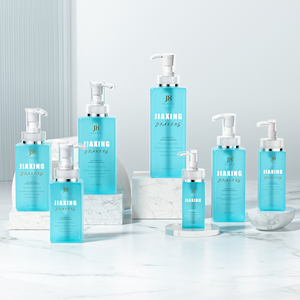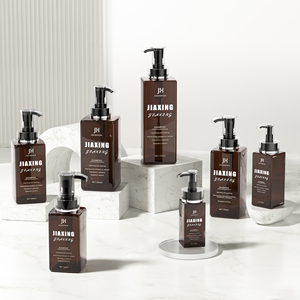(467 products available)


















![[EORINY] ALL in ONE <strong>LOTION</strong> for Children Nourishing Hand and <strong>Body</strong> <strong>Lotion</strong> Non Toxic for Children Made in Korea](http://s.alicdn.com/@sc04/kf/Ab1a014be39734f4ba1cb5b9179368710l.jpg_300x300.jpg)
![[EORINY] ALL in ONE <strong>LOTION</strong> for Children Nourishing Hand and <strong>Body</strong> <strong>Lotion</strong> Non Toxic for Children Made in Korea](http://s.alicdn.com/@sc04/kf/A50923bc88535499186dee01818a1a3da6.jpg_300x300.jpg)
![[EORINY] ALL in ONE <strong>LOTION</strong> for Children Nourishing Hand and <strong>Body</strong> <strong>Lotion</strong> Non Toxic for Children Made in Korea](http://s.alicdn.com/@sc04/kf/Af50a1d8cac4e4ae4a3aff59e58faddabe.jpg_300x300.jpg)
![[EORINY] ALL in ONE <strong>LOTION</strong> for Children Nourishing Hand and <strong>Body</strong> <strong>Lotion</strong> Non Toxic for Children Made in Korea](http://s.alicdn.com/@sc04/kf/Aca80ff96ab18403c92cbe5b314f50346P.jpg_300x300.jpg)
![[EORINY] ALL in ONE <strong>LOTION</strong> for Children Nourishing Hand and <strong>Body</strong> <strong>Lotion</strong> Non Toxic for Children Made in Korea](http://s.alicdn.com/@sc04/kf/A4aae3050dddb40c7a26c06fa48ab2804f.jpg_300x300.jpg)
![[EORINY] ALL in ONE <strong>LOTION</strong> for Children Nourishing Hand and <strong>Body</strong> <strong>Lotion</strong> Non Toxic for Children Made in Korea](http://s.alicdn.com/@sc04/kf/A77259524b756430ab81a25920f18f81ck.jpg_300x300.jpg)


































































































































































































A 110ml body lotion is a cosmetic product designed to moisturize and nourish the skin. It is available in different types depending on the specific needs and preferences of the users. These types include:
Regular body lotions
The primary purpose of regular body lotions is to hydrate the skin. They are formulated for daily use after bathing or showering to lock in moisture. These lotions contain water, oils, and emulsifiers. Some common ingredients are glycerin and petrolatum. They are affordable and come in travel-size packs for convenience.
Intensive moisturizers
Intensive moisturizers are body creams thicker than regular lotions. They have a higher oil content, forming a more robust moisture barrier on the skin. These moisturizers are ideal for very dry areas prone to flaking, cracking, or eczema. They are best used during the winter when the weather is cold and dry. Some ingredients used in intensive moisturizers are shea butter and ceramides.
Hydrating body lotions
Hydrating body lotions have ingredients that attract and retain water in the skin. They contain humectants like glycerin, hyaluronic acid, and urea. These lotions are suitable for all skin types, especially dehydrated skin. They are typically lightweight and absorbed quickly without leaving a greasy residue.
Anti-aging body lotions
Anti-aging body lotions have ingredients that help reduce the appearance of fine lines and wrinkles. They are mainly used on the hands and neck, which are the first to show signs of aging. Some ingredients used include antioxidants, peptides, and retinol. While these lotions are beneficial, they are costly compared to regular body lotions.
Body lotions with SPF
Body lotions with SPF have ingredients that protect the skin from harmful UV rays. They prevent sunburns and reduce the risk of skin cancer. These lotions have a convenient way of applying sun protection. It is recommended to reapply every after two hours for effective results.
Body lotions with natural ingredients
Body lotions with natural ingredients have plant-based or organic components. They are free from synthetic additives, chemicals, and artificial fragrances. This makes it suitable for people with sensitive skin. Some common ingredients include aloe vera, chamomile, and coconut oil.
Body lotions for specific skin conditions
Body lotions for specific skin conditions are designed to treat skin problems like eczema, psoriasis, and acne. They have ingredients that soothe, reduce inflammation, and promote healing. Some common ingredients are colloidal oatmeal, ceramides, and salicylic acid.
Wholesale buyers have many options when choosing body lotions for their business. Here are some tips to help them make the right choice.
Know the target market
To choose the best body lotions, wholesalers must first know who their customers are. Are they young or old? Do they want scented lotions, or do they need unscented ones because they have sensitive skin? Knowing what customers want will help them choose the right kinds of lotions to sell.
Research popular trends
Wholesalers should look for data that show which body lotions are the most popular. They should find out which ones sell the most, which ones customers like best, and which ones are new and exciting. This research will help them choose lotions that customers want to buy.
Pick different kinds of lotions
It is essential to choose various body moisturizers so that all customers have something they like. This includes picking lotions with different scents and lotions that are thick and thin. They should also choose some organic lotions for customers who prefer natural products. By selecting various body lotions, wholesalers will have something for every customer.
Think about special formulas
Some body lotions have special formulas that help with specific things. For example, some lotions have extra vitamins, and others help with very dry skin. Wholesalers should make sure they have some of these special body lotions because some customers will be looking for them.
Choose brands wisely
When selecting body lotions, it is essential to pick brands that customers know and trust. However, it is also a good idea to consider new brands that have exciting products. By choosing well-known brands, customers will feel comfortable buying them. At the same time, new brands might bring in customers who want to try new things.
Consider seasonal sales
Body lotions that sell well in the winter may not be as popular in the summer. For example, customers may want thicker lotions in the winter to keep their skin from getting dry because of the cold weather. In the summer, they may want thinner, cooler lotions. Wholesalers should think about the seasons when choosing body lotions.
Ask customers for feedback
Wholesalers should talk to their customers and ask them what kind of body lotions they want to buy. Customers may have ideas about new products they want that wholesalers do not know about. By asking for feedback, wholesalers will show customers that they care about what they think, and they may discover new products that will help them grow their business.
How to use
Regular body lotion use is simple and greatly improves skin health. First, thoroughly cleanse the skin where the lotion will be applied. Doing so ensures the lotion penetrates the skin and does not compete with dirt and oil. Once the skin is clean, dispense an appropriate amount of 110ml body lotion onto the fingertips or palm. Start gently massaging the lotion into the skin using circular motions. Pay particular attention to dry areas like elbows, knees, and hands. Continue rubbing the lotion until it is fully absorbed by the skin.
The key is to apply the lotion while the skin is still slightly damp after bathing or showering. This allows maximum hydration. However, it can be used anytime the skin feels dry. Consistent daily use maintains skin softness and moisture levels. Reapplication may be needed in extremely dry climates.
Installation
No special installation is required for body lotions. They are ready to use straight from the container. Body creams and lotions can be conveniently stored in cabinets, drawers, or on counters for easy access. There is no need for shelves or mounting. Simply pick the lotion from its storage location when ready to apply it to the skin.
Product safety
For safe use, it is important to first read all warnings and directions on the body lotion label. Some ingredients may cause skin irritation or reactions in certain individuals. A patch test should be performed by applying a small amount to a discreet skin area and monitoring for 24 hours any redness, itching, or swelling before widespread use. Body lotions should only be applied externally. Ingesting them could cause harm.
Keep all lotions out of reach of children to prevent accidental ingestion or application where they could risk harm. If a body lotion gets into the eyes, it must be thoroughly rinsed with water immediately. Any irritation that persists should be reported to a physician. Proper storage is also essential for safety. Lotions should be kept in a cool, dry place away from direct sunlight to maintain the integrity of the ingredients and avoid potential skin hazards from degraded components over time.
The functions, features, and design of a 110 ml body lotion are the main considerations for manufacturers when developing the product. Below is a detailed analysis of each aspect.
Body lotions are moisturizers that help seal the skin's natural oils. They keep the skin soft, smooth, and hydrated. They also help protect the skin from pollution, dust, and other harmful elements. Some body lotions have ingredients that help repair and heal dry, cracked, or rough skin. They are an excellent choice for people with eczema or psoriasis. Body lotions are also vital in maintaining the skin's youthful appearance. They help prevent fine lines and wrinkles by keeping the skin soft and plump.
Packaging
Body lotions are packaged in tubes, pumps, or jars. The most common type of packaging is a plastic tube or pump. It allows for easy application in a single squeeze or pump. They are also travel-friendly and can easily fit in bags.
Consistency and texture
Body lotions have varying textures and consistencies. This includes thin, watery lotions to thicker, creamy kinds. The thin, watery body lotions are lighter and quick-absorbing. They are ideal for hot and humid climates. Creamy body lotions are thicker and provide deep moisturization. They are best suited for dry skin.
Ingredients
A 110ml body lotion is made of water, emulsifiers, humectants, occlusives, and active ingredients. Water is the main ingredient in lotions. It acts as a base. Emulsifiers help mix water and oil together. Humectants, such as glycerin, attract water into the skin. Occlusives like petroleum jelly lock in moisture and prevent water loss. Some body lotions have active ingredients like aloe vera, shea butter, cocoa butter, and vitamins. They offer extra benefits to the skin.
Manufacturers prioritize functionality and user experience in the design of body lotions. The bottle or tube should be easy to hold with one hand. The dispensing mechanism should also be easy to use. The body lotion should have a pleasant smell and feel. Users should enjoy the experience of using the product.
Q1: What are the benefits of using body lotion?
A1: The body lotion is lighter and absorbs quickly into the skin. It keeps the skin moisturized and soft. Some body lotions have compounds that help the skin heal from minor irritations. Regular use of body lotion makes the skin look healthy and improves skin texture.
Q2: Are there any disadvantages of using body lotion daily?
A2: Some body lotions have harmful chemicals that can irritate the skin. Users may develop skin reactions or become dependent on the lotion. Using body lotions with high fragrances can cause breathing problems for some users.
Q3: What should buyers look for in a body lotion?
A3: Body lotions are abundant in the market. Therefore, it's vital for buyers to know what to look for in a body lotion. They should choose body lotions with natural ingredients. Lotions with soothing ingredients like aloe vera improve hydration. Buyers should also choose body lotions with SPF for sun protection.
Q4: What are the differences between lotion, cream, and ointment?
A4: 110 ml body cream is thicker than lotions and is mostly water-based. It provides high levels of moisture and is ideal for dry skin. On the other hand, ointments have a water-to-oil mixture. They offer the skin the most significant amount of hydration and are suitable for sensitive skin.